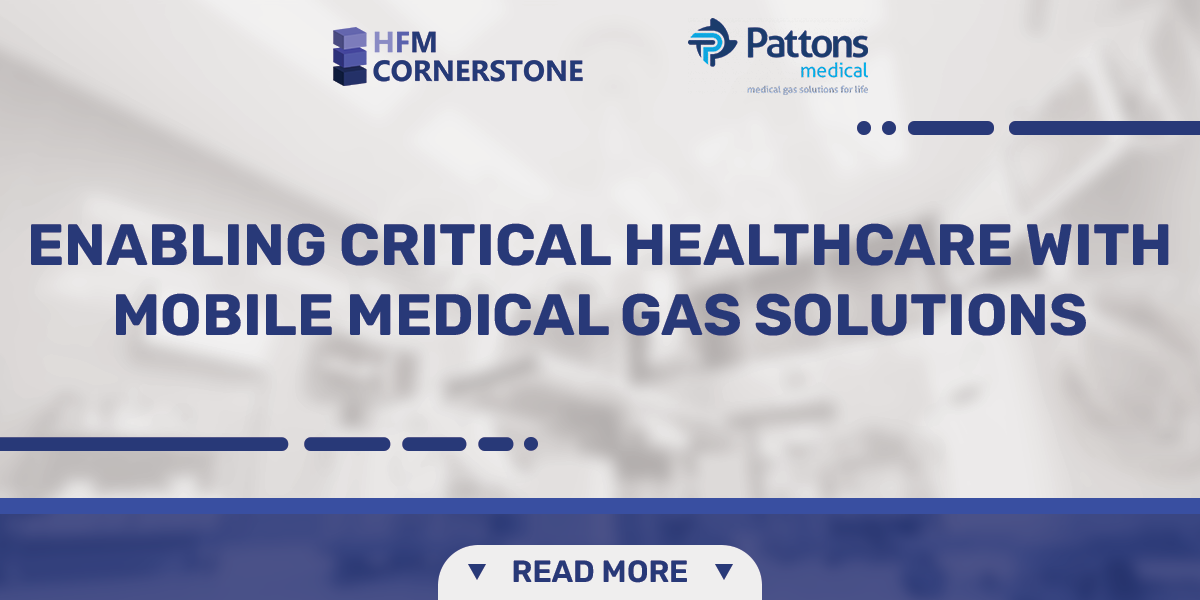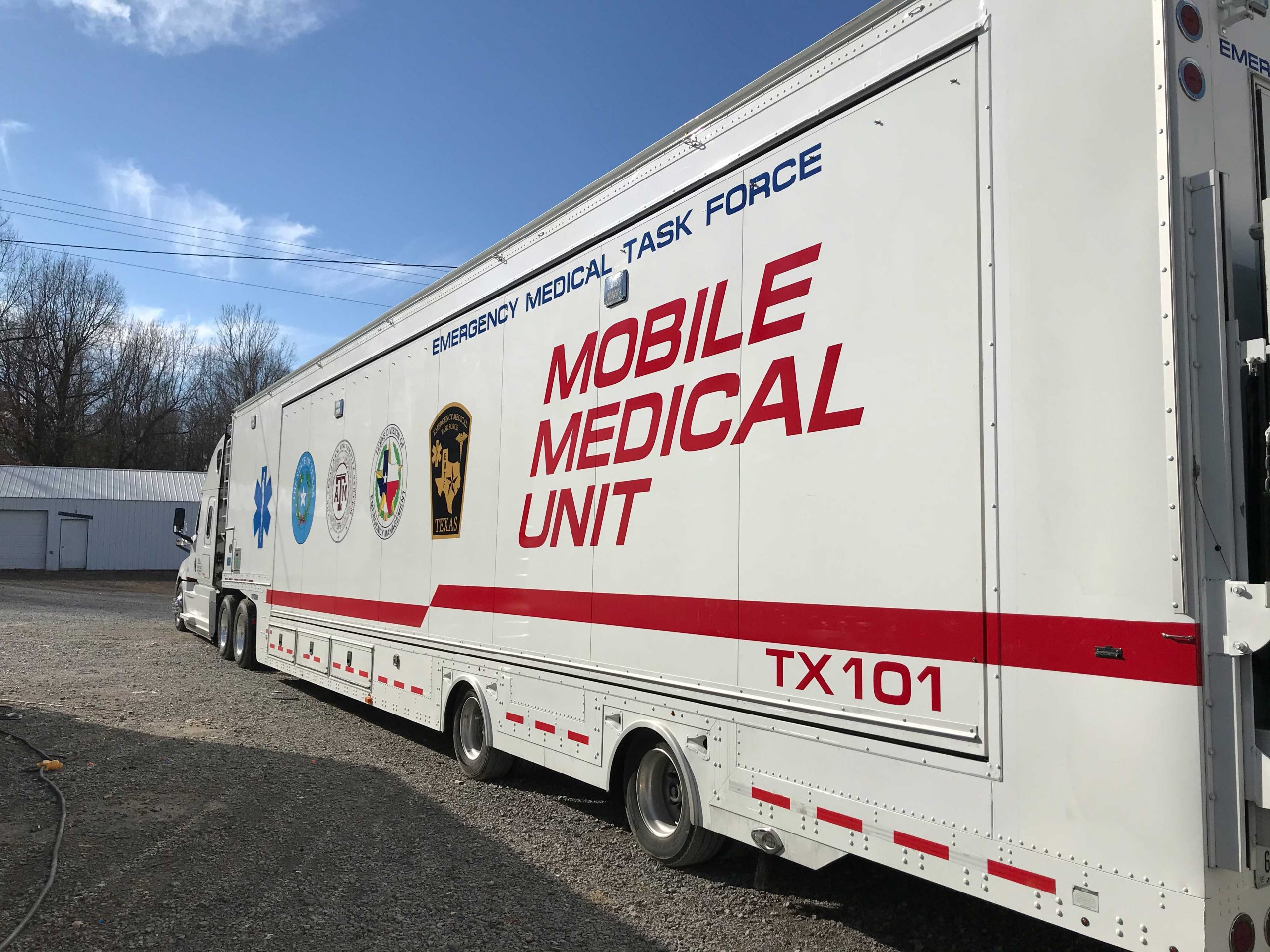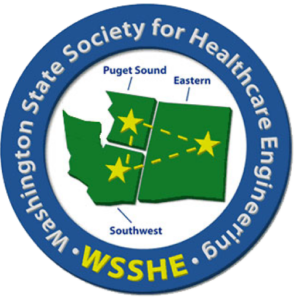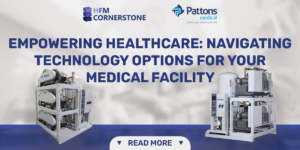The US Federal Emergency Management Agency (FEMA) commissioned Pattons Medical to provide mobile acute care units to serve COVID-19 hotspots in the rural USA.
EXECUTIVE SUMMARY
FEMA’s mission is helping people before, during and after disasters across the the USA. During the COVID-19 pandemic, the demand for critical healthcare in rural parts of the country rose rapidly while hospitals were overstretched with COVD-19 patients. Quick to act, FEMA introduced a medical solution comprising of innovative mobile acute care units ensuring healthcare was more accessible to rural Americans during the pandemic.
INDUSTRY OVERVIEW
The World Health Organization (WHO) has predicted that Chronic Obstructive Pulmonary Disease (COPD) will be the third leading cause of death worldwide by 2030. With other respiratory diseases like COVID-19 on the rise, oxygen is increasingly being used to treat patients.
The US has the largest share in the medical gases and equipment industry worldwide. An aging population (By 2034, the US geriatric population is slated to reach 77 million, according to the US Census Bureau), the prevalence of lung diseases like asthma, and a rise in the number of road accidents are some of the other factors leading to more demand for medical gases.
The advanced healthcare facilities, particularly ICU units, and a well-established gas market are reasons why the US has the biggest share in the medical gases and equipment sector globally. Home oxygen therapy and point-of-care diagnostics are becoming more popular. Government organisations are also taking initiatives to ensure medical gases and equipment are readily available to people throughout the country.
With a CAGR of 8.1%, the medical gases and equipment industry is expected to cross $18 billion globally by 2027, according to CMI.
ORGANIZATION OVERVIEW
FEMA established in 1979 to help in disaster efforts. The agency helps coordinate resources during emergencies that overstretch local and state capabilities. The agency seeks to unify and professionalise emergency management throughout America. To achieve this goal, FEMA works towards empowering everyone with the information they need to prepare for disaster impact.
They came to the fore during natural disasters such as hurricane Katrina in 2005 and are now playing a pivotal role in battling the pandemic. The agency was tasked with sourcing medical supplies during COVID-19.
FEMA sought to make medical care available in the country more uniform. Critical healthcare was more readily available in urban America compared to rural locations. With COVID-19 hotspots cropping up in the rural USA in addition to urban areas, it was essential to deliver medical care to rural parts of the country quickly.
CUSTOMER CHALLENGE
About 60 million Americans (around 19%[iii] of the total population) live in rural areas, according to the Centers for Disease Control and Prevention (CDC). They are older than those living in urban areas and have higher rates of underlying chronic diseases. Although rural Americans require more medical assistance than those in urban, rural healthcare infrastructure is limited. 80% of rural Americans are classified as medically underserved. Almost 700 hospitals risk being closed in rural USA.
In rural America, COVID-19 case rates per 100,000 persons were more than those in urban areas. Surprisingly, 63% of rural hospitals do not have ICU beds, making it difficult for them to treat patients with severe COVID-19 symptoms. COVID-19 hotspots[v] cropped up as early as March 2020, often due to the high presence of correctional facilities and meat processing plants.
During lockdowns, while cities could convert large areas like stadiums into makeshift hospitals, rural areas did not have such infrastructure to do so. Many rural hospitals only have a hundred beds and were overwhelmed with COVID-19 cases. Often hard to reach, FEMA required mobile units to deliver medical care in such places.
COVID-19 patients were often acute cases, requiring medical-grade breathing air, oxygen, and medical vacuum. Medical air compressors use cool and dry air to dry ventilators. Many components comprise the mobile healthcare unit to ensure purity and dryness complies with NFPA 99 regulations. Building and assembling the smallest unit possible to ensure mobility and code compliance was a challenge.
THE SOLUTION
Pattons Medical had developed mobile medical units before the pandemic, but these units became even more critical during COVID-19. Their experience in developing and putting together the smallest possible units helped make optimal mobile ICU units.
Each component of the unit was tested intensively to ensure high quality of operation, easy to install and maintain. If appropriately maintained, these units have a life of 10-15 years, the longest in the industry. Unfortunately, competing units tend to heat up, reducing their life.
The mobile unit is a semi-track that, when in place, has panels that expand to fit patients. Hoses with specific fittings coil up to fit in the mobile unit. When these pipes are uncoiled at the site, valve outlets ensure the mobile units work like hospitals on the go.
To combat the ventilation challenge in a mobile unit, Pattons Medical used open configurations to protect pumps and ensure they would keep working even in a compact space. Medical air compressors are used to dry ventilators. If the air is moist and gets in the patients’ lungs, that moisture could be enough to drown them.
Medical vacuum pumps pull out air from the patient with a high oxygen concentration. Pumps should not mix air and oil, and this is where claw technology is important. It doesn’t let in hydrocarbons in the vacuum exhaust.
Manifolds deliver oxygen through eight-cylinder tanks in mobile units. They use pressure to push the oxygen out through valves to pipes where nurses administer it to patients. Alarms are in place on both sides of the semi-track to turn oxygen and air off in case of loss of air pressure. They read the pressure in the pipe to do so. Regulations state a requirement for 2.7-4.1 bar of pressure for medical air and oxygen.
BUSINESS BENEFITS
Medical Gas Foreman, said, “We were very impressed with the high quality of all equipment shipped to us.” Josh Pedraja, Medical Gas/Lab Consultant at Pattons Medical, said, “When I set foot in the first trailer as it was being built, I had a great sense of joy and pride knowing I helped design these trailers; to assist others in times of need. Post pandemic, these trailers will be used for relief work during natural disasters such as hurricanes and tornadoes.”
Pattons Medical employees always keep in mind that they are manufacturing life support equipment. There is a patient at the other end of their equipment, motivating them to innovate constantly. Such innovation was the need of the hour during this pandemic. With more units being ordered, hospitals affirmed their faith in the efficacy of Pattons Medical’s mobile units. By rising to the occasion, Pattons Medical helped to reduce the fatalities in rural areas due to COVID-19.
CONCLUSION
FEMA helped rural hospitals in the US provide critical healthcare to patients who needed it most by reacting quickly. Their underlying commitment to quick emergency care is what made it possible for them to provide mobile ICU units wherever they were urgently required.
Developing compact units that meet regulatory requirements is a challenging task. However, Pattons Medical had prior experience in doing so, enabling them to produce similar units to serve COVID-19 patients rapidly.
As the pandemic continues, the demand for these units is steady. As a socially responsible organisation, Pattons Medical is manufacturing these mobile medical units that FEMA testifies to be comparable to those in the hospitals.










